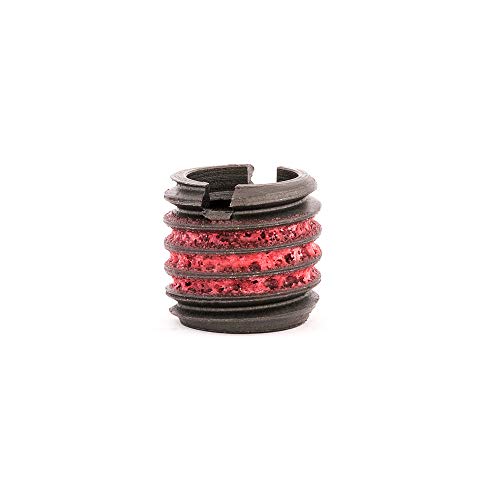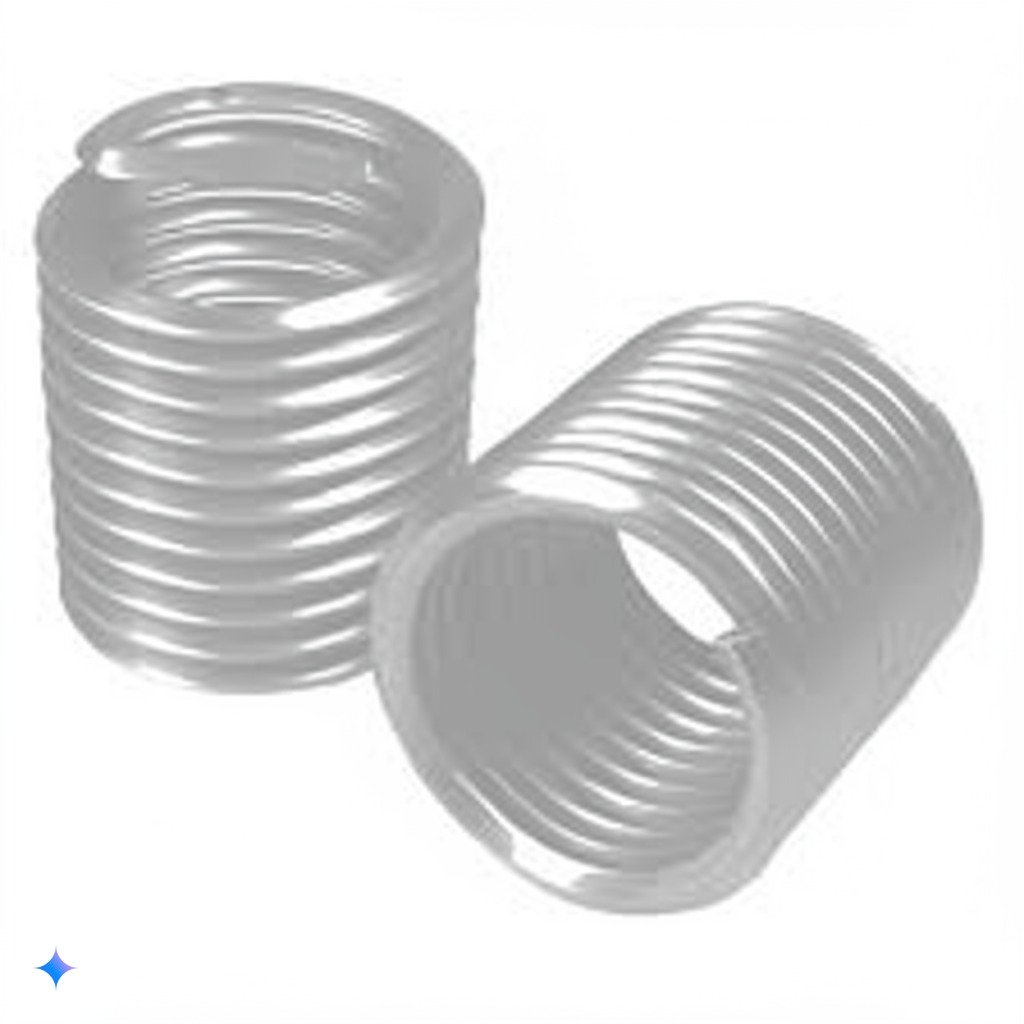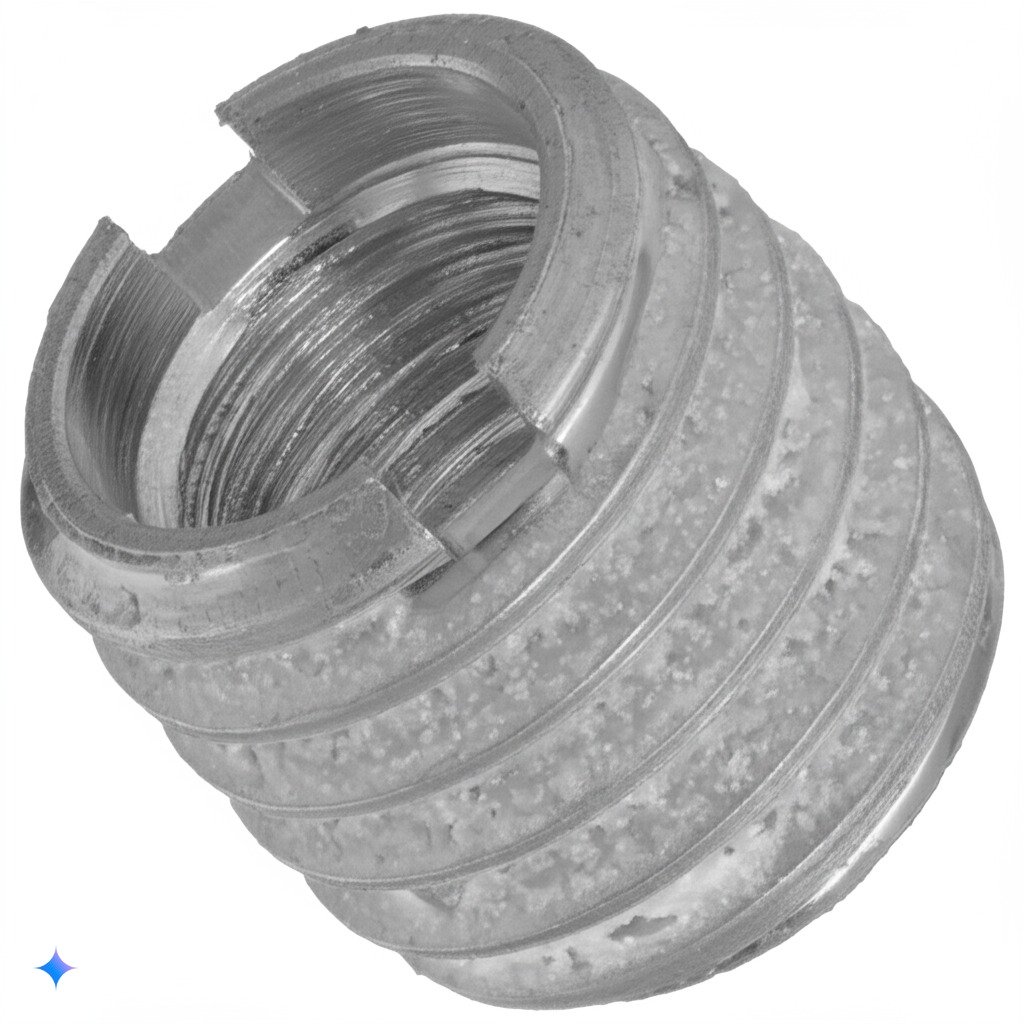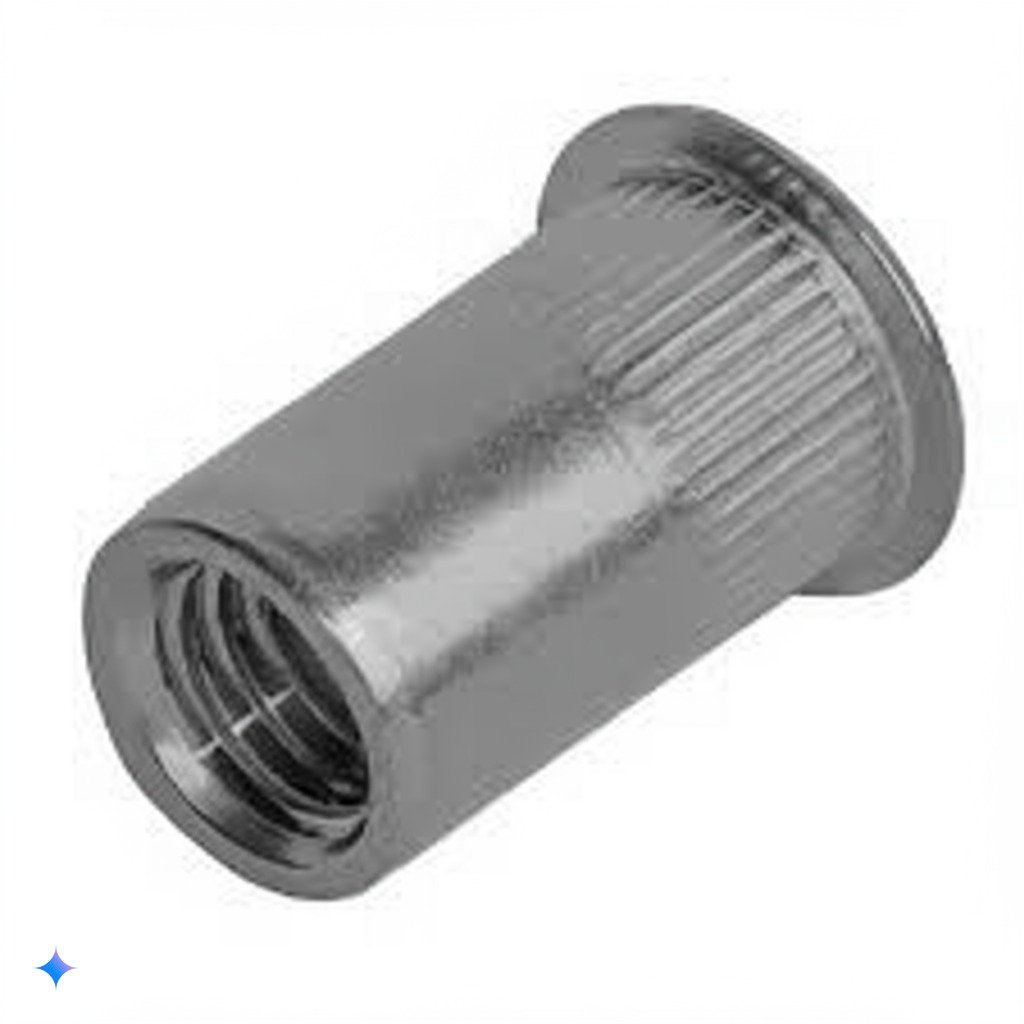
By Nicolás Longo
(As an Amazon Associate we earn from qualifying purchases)
Enhance Your Assemblies with Thread Locking Inserts
Thread Locking Inserts have emerged as a revolutionary fastener solution in modern manufacturing and repair work. These innovative components are engineered to secure threaded connections in various materials—such as metal, plastic, and composite substrates—ensuring that screws or bolts remain firmly in place even under high vibration or stress. Thread Locking Inserts not only restore stripped threads but also boost the overall strength of an assembly, making them indispensable for industrial applications, automotive repairs, and DIY projects alike.
When traditional thread repair methods fall short, Thread Locking Inserts provide a reliable alternative. They work by forming a new, robust thread inside a pre-drilled hole, which is then locked in place to prevent loosening. With improvements in material technology, these inserts are available in different grades—ranging from stainless steel for corrosion resistance to high-tensile options for heavy-duty applications. Recent industry studies have shown that proper installation of Thread Locking Inserts can increase joint strength by up to 20% compared to using damaged threads (Acme Industrial Co., 2013).
Understanding the mechanics behind Thread Locking Inserts is essential for both professionals and enthusiasts. Essentially, these inserts combine the convenience of a repair kit with the efficiency of modern fasteners. They are designed to be installed using conventional tools like drills and taps, making the process accessible without the need for specialized equipment. Moreover, their design includes features such as locking keys or flanges that help distribute the load more evenly across the repaired area. This not only enhances the strength of the connection but also improves the durability and longevity of the assembly.
What Are Thread Locking Inserts?
Thread Locking Inserts are specialized fasteners designed to restore or reinforce the threads in a damaged or worn-out hole. They are typically manufactured from high-quality metals like stainless steel or brass and come with internal threads that accept standard bolts. These inserts work by being pressed or tapped into a pre-drilled and pre-tapped hole, where they form a new, secure thread profile. The key advantage is their ability to convert a compromised threaded hole into a robust and reusable connection point, reducing downtime and material waste.
Thread Locking Inserts are used in a wide range of applications—from repairing automotive components to assembling 3D-printed parts. Their versatility means that whether you’re working on a critical engine repair or a simple furniture project, these inserts offer a solution that not only fixes the problem but also enhances the overall integrity of the assembly.
Benefits of Using Thread Locking Inserts
One of the primary advantages of Thread Locking Inserts is their capacity to significantly enhance thread strength. They provide a permanent repair that prevents screws and bolts from loosening over time. This is particularly important in high-vibration environments like automotive and aerospace applications, where even minor thread degradation can lead to catastrophic failures.
Additionally, Thread Locking Inserts are cost-effective. Instead of replacing entire components when threads strip, you can simply install an insert, saving both time and money. They also offer environmental benefits by reducing scrap and rework. Furthermore, these inserts are available in a range of materials and finishes, making it easy to select the perfect option for your specific application.
Installation Tips and Best Practices
For optimal performance, the installation of Thread Locking Inserts must be precise. Begin by drilling a pilot hole to the exact diameter recommended in the manufacturer’s datasheet. Then, tap the hole to create the new thread profile. It is crucial to maintain perpendicularity when drilling to ensure that the insert seats evenly. Using a drill press or a guide can help achieve the necessary precision.
After tapping, clean the hole thoroughly to remove any debris or metal shavings that might interfere with the insert’s grip. Some professionals recommend applying a light lubricant or threadlocker on the insert before installation to ensure a seamless fit. Finally, insert the Thread Locking Insert using standard tools; if it features locking keys or flanges, ensure they are fully engaged to provide maximum load distribution.
Comparative Analysis: Thread Locking Inserts vs. Other Repair Methods
In comparison to alternatives like helicoil inserts or traditional re-tapping, Thread Locking Inserts offer a unique blend of strength, ease of installation, and cost efficiency. While helicoils are widely used, they often require specialized tools and can be challenging to remove without damaging the parent material. Thread Locking Inserts, however, are designed to be installed and removed using standard workshop tools, reducing both installation time and potential for error.
Recent tests conducted by industry experts have demonstrated that assemblies repaired with Thread Locking Inserts can sustain higher torque loads and exhibit superior pull-out strength. For instance, one study reported that an engine block repaired with Thread Locking Inserts withstood up to 5,100 lb of force before failure, compared to lower figures recorded for alternative methods (Partzilla, 2022).
Expert Recommendations on Thread Locking Inserts
Renowned manufacturers and industry experts recommend Thread Locking Inserts for applications where precision and reliability are critical. According to technical insights from Acme Industrial Co., using Thread Locking Inserts in damaged threads not only extends the lifespan of the component but also provides a safety margin in dynamic environments. They are especially favored in aerospace, automotive, and high-performance industrial machinery, where even a slight failure in the fastener can lead to significant downtime or safety hazards.
For best results, always adhere to the installation guidelines provided by the insert manufacturer. Experts advise that proper alignment and controlled installation pressure are essential to maximize the benefits of these inserts. Furthermore, periodic maintenance checks on repaired threads can help detect any potential loosening, ensuring that the repair remains secure over time.
Applications of Thread Locking Inserts
Thread Locking Inserts are incredibly versatile. In automotive repairs, they are used to restore stripped threads in engine blocks, cylinder heads, and suspension components. In industrial machinery, these inserts are applied to repair worn-out threaded holes in heavy equipment, ensuring continued performance under high loads. Additionally, in the realm of 3D printing and DIY projects, Thread Locking Inserts provide a reliable method for creating strong, removable connections in plastic and composite materials. Their adaptability across multiple industries is a testament to their robust design and practical utility.
Future Trends and Innovations in Thread Locking Inserts
The future of fastener technology, particularly Thread Locking Inserts, looks promising. Advances in metallurgy and manufacturing techniques are leading to the development of inserts with even higher strength-to-weight ratios and improved corrosion resistance. Innovations such as self-locking and key locking features are becoming more prevalent, offering enhanced security for critical applications. Moreover, the integration of smart technology may soon allow for real-time monitoring of fastener integrity, ensuring that Thread Locking Inserts continue to perform reliably in even the most demanding environments.
Emerging trends also include the use of eco-friendly materials in the production of Thread Locking Inserts, aligning with the growing focus on sustainable manufacturing practices. These advancements are expected to drive the market forward, offering manufacturers and repair professionals even more effective and efficient solutions.
10 Best Thread Locking Inserts To Buy
- Threaded inserts are made of high quality stainless steel ,anti- and rust, good toughness, high hardness and low abrasio…
- With certain elasticity and even load,metric thread inserts are resistant to vibration to avoid loosening.
- Tapping Inserts can be used repeatedly, can also repair the damaged thread by installing into thread hole.

- THREADED INSERTS FOR METAL – E-Z LOK Thread Inserts for metal. Solid threaded inserts that are strong, easy to install, …
- INSTALL WITH STANDARD TOOLS – 12L14 Carbon steel threaded inserts. Install with standard tools. No special drills, taps,…
- QUICKLY REPAIR DAMAGED THREADS – Quickly repair damaged threads or reinforce tapped holes in soft metals with these stee…

- Repair internal thread and strengthen external thread.
- When applied to low strength materials, the strength of threaded hole can be greatly enhanced.
- Repair the wrong hole, avoid the wrong parts reworking.
- ✅ Thin Wall Self Locking Thread Insert, 1/2″-20 Int Thrd Sz, Carbon Steel, 5 PK
- ✅ Item: Self Locking Thread Insert
- ✅ Material: Carbon Steel
- 46-piece set of solid, heavy wall, carbon steel, self-locking, unified coarse thread inserts for use in metal
- Packaged in a case with a compartment for each of five different sizes: 10-24, 1/4-20, 5/16-18, 3/8-16, and 1/2-13
- Self-locking with pre-applied Loctite on the external threads that is ready to use in 3-5 minutes and seals against liqu…

- Easy to Use Solution For Repairing Damaged Threads in Metal
- Install With Standard Drill & Tap; NO Special Tools Needed
- Self Locking; Preapplied Adhesive Activates Upon Installation and is Fastener-Ready in 3-5 Minutes

- THREADED INSERTS FOR METAL – E-Z LOK Thread Inserts for metal. Solid threaded inserts that are strong, easy to install, …
- INSTALL WITH STANDARD TOOLS – 12L14 Carbon steel threaded inserts. Install with standard tools. No special drills, taps,…
- QUICKLY REPAIR DAMAGED THREADS – Quickly repair damaged threads or reinforce tapped holes in soft metals with these stee…

- THREADED INSERTS FOR METAL – E-Z LOK Thin Wall Thread Inserts for metal. Solid threaded inserts that are strong, easy to…
- INSTALL WITH STANDARD TOOLS – 303 stainless steel threaded inserts machined out of solid steel for strength. Install wit…
- QUICKLY REPAIR DAMAGED THREADS – Quickly repair damaged threads or reinforce tapped holes in soft metals with these stee…

- REPLACE THE CRAPPY PLASTIC WHEELS:Our Stem Casters with brake are well built and sturdy roll smoother,have a softer whee…
- SIZE OF CASTER WITH BRAKE:The stem locking casters size is 5/16”-18×1”,thread diameter is 5/16”(8mm) and the stem length…
- MULTI NUTS CHOCIE:1:Hex Nut(Tighten) 2:Flange Nut(Tighten) 3:Nylon Nut(Tighten) 4:Set Screw(Easy Screw) 5:No Nut,you cou…

- THREADED INSERTS FOR WOOD – E-Z LOK Thread Inserts for hard-wood are ideal for applications where stripping or thread er…
- PROPRIETARY KNIFE THREAD – E-Z Knife thread inserts provide superior holding power using a proprietary external “knife” …
- BRASS OR STEEL OPTIONS – Brass threaded inserts or stainless steel threaded inserts available. Stainless steel is recomm…

Key Considerations When Choosing Thread Locking Inserts
When selecting Thread Locking Inserts for your projects, consider the following factors:
- Material Compatibility: Choose inserts made from materials that match or exceed the strength requirements of your application. Stainless steel inserts are ideal for corrosive environments, while brass inserts work well in low-load, non-corrosive applications.
- Thread Pitch and Size: Ensure that the insert’s thread pitch and dimensions align with the bolt or screw you plan to use. Refer to the datasheets provided by manufacturers for accurate specifications.
- Ease of Installation: Opt for inserts that can be installed using standard tools and techniques. Inserts that require specialized equipment may increase labor costs and complexity.
- Load Requirements: Evaluate the mechanical demands of your application. For high-torque or high-load situations, select inserts that offer enhanced pull-out and torque resistance.
- Environmental Conditions: Consider the operating environment—temperature, humidity, and exposure to chemicals may affect the long-term performance of the insert.
By taking these factors into account, you can choose the best Thread Locking Inserts that not only meet but exceed your performance expectations.
Industry Insights and Real-World Performance
In the fastener industry, real-world testing and user feedback play a crucial role in determining product reliability. Independent studies have shown that Thread Locking Inserts can increase the overall strength of an assembly by 15–20% compared to repaired threads without inserts. For example, tests conducted by Partzilla.com demonstrated that an engine block repaired with high-quality Thread Locking Inserts resisted forces up to 5,100 lb before any signs of failure emerged.
Additionally, customer testimonials from sectors such as aerospace and automotive consistently highlight the durability and reliability of these inserts. As one user noted, “Thread Locking Inserts saved us from a complete engine overhaul by restoring stripped threads with minimal downtime” (Project Farm, 2022). These insights underscore the value of integrating Thread Locking Inserts into maintenance and repair protocols.
Practical Tips for Maintaining Thread Locking Inserts
To ensure that your Thread Locking Inserts continue to perform optimally over time, follow these practical tips:
- Regular Inspections: Periodically check the integrity of the inserts in your assemblies, especially in high-vibration or high-stress applications.
- Proper Lubrication: Use appropriate lubricants during installation to ensure smooth threading and prevent galling.
- Controlled Torque Application: Avoid over-tightening bolts, as excessive torque can damage the insert or the surrounding material.
- Environmentally Appropriate Materials: Select inserts based on the environmental conditions—opt for corrosion-resistant materials in humid or chemically aggressive settings.
- Documentation: Keep a record of the insert specifications and installation parameters for future reference and maintenance planning.
These tips not only extend the lifespan of your repairs but also provide peace of mind knowing that your assemblies are secure and reliable.
Expert Perspectives on the Future of Thread Locking Inserts
Experts in the fastener industry predict that advancements in technology will further enhance the capabilities of Thread Locking Inserts. With ongoing research in material science, future inserts may offer even greater strength and improved installation ease. Furthermore, the integration of digital monitoring systems could enable real-time assessment of insert integrity, making predictive maintenance a reality. By staying informed about these innovations, you can continuously optimize your repair processes and remain ahead of the competition.
The evolution of Thread Locking Inserts is also driven by the increasing demand for sustainable manufacturing solutions. Manufacturers are exploring eco-friendly production methods that reduce waste and energy consumption while maintaining high performance. These developments promise to make Thread Locking Inserts not only more efficient but also more environmentally responsible—a win-win for both industry and the planet.
Final Thoughts on Thread Locking Inserts
Thread Locking Inserts have become a cornerstone in modern fastener technology. Their ability to restore and reinforce threaded connections across a wide array of applications makes them indispensable for repair, maintenance, and new assembly projects. Whether you are repairing damaged engine components or designing modular furniture that requires disassembly, Thread Locking Inserts offer a robust and reliable solution.
The market today offers a diverse range of Thread Locking Inserts, each designed to meet specific performance criteria and environmental conditions. By carefully evaluating factors such as material compatibility, thread dimensions, and installation ease, you can select the best inserts for your projects. Industry research consistently shows that these inserts not only improve the mechanical strength of assemblies but also contribute to cost savings and sustainability in manufacturing operations.
As technological advancements continue to drive innovation, the future of Thread Locking Inserts looks promising. From smart, self-monitoring inserts to eco-friendly production methods, the next generation of these fasteners will further enhance their role in industrial and DIY applications alike. Staying informed and choosing high-quality products will ensure that your assemblies remain secure and efficient for years to come.
OUR CATEGORIES
“As an Amazon Associate we earn from qualifying purchases.”






































![[ J&J Products, Inc] 8-32 Brass Insert 50pcs, 0.251 in OD, 0.185 ...](https://m.media-amazon.com/images/I/41ecC2PHEOL._SL500_.jpg)

















































